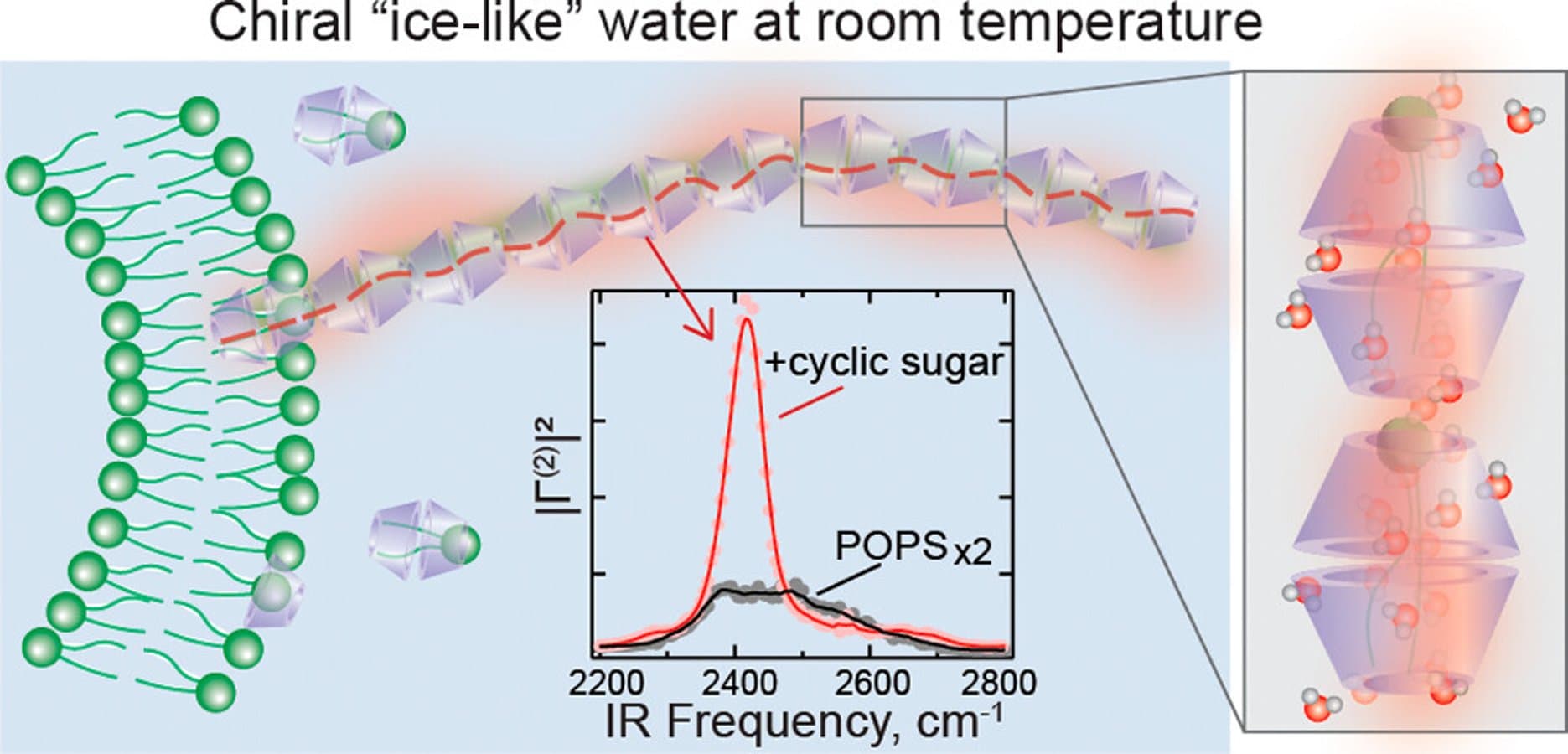Interfacial Self-Assembly of Sugars at Nanoscale Membranes Leads to Micron-Scale, Spectroscopically Ice-Like Chiral Suprastructures of Water #445

Authors
Li Zhang, Jinchan Liu, Kislon Voïtchovsky, Chaudhary E. Rani, Saranya Pullanchery, Jan Dedic, Victor S. Batista, Georg E. Fantner, Sylvie Roke
Abstract
Life requires chemical chiral specificity. The emergence of enantioselectivity is unknown but has been linked to diverse scenarios for the origin of life, ranging from an extraterrestrial origin to polarization-induced effects, and magnetic field-induced mineral templating. These scenarios require an originating mechanism and a subsequent enhancement step, leading to widespread chiral specificity. The common denominator in all scenarios is water, which provides an environment for the enantioselective process. Because water is a nonchiral molecule, it has not been considered as an active ingredient in either of these processes. Here, we show that water can form extended chiral ordered structures that are induced by interactions with simple chiral prebiotic molecules, such as lipids and sugars. Using a combination of molecular dynamics simulations, chiral-sensitive and interface-specific vibrational sum frequency scattering, second harmonic scattering, and atomic force microscopy, the interfacial structure of water on nanoscale lipid membranes was investigated. Out-of-plane H-bonding interactions between achiral liposomes and simple chiral cyclic sugars lead to ordered, spectroscopically ice-like, chiral water suprastructures that extend along the self-assembled lipid-sugar complex over distances >10 μm. Such highly ordered self-assemblies could potentially have provided microenvironments that enable the enhancement of chirality.